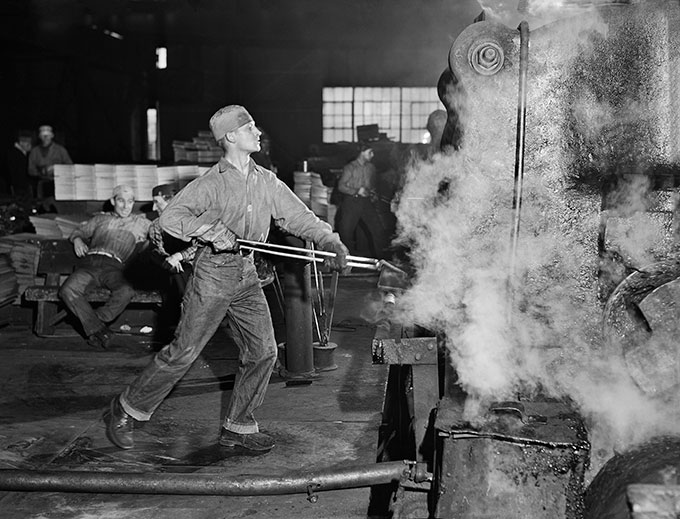President Donald Trump’s “Liberation Day” tariffs–and his promised trade agenda—draw partly from a narrative popular among protectionists. In this telling, high tariffs fueled America’s nineteenth-century industrial rise. Tariff-supporters like Oren Cass have argued that the United States “transformed from colonial backwater to continent-spanning industrial colossus” behind protective barriers.
Economic research suggests otherwise. While the United States did maintain exceptionally high tariffs from the Civil War through World War I (often 40 percent to 50 percent on manufactured imports), these were at best incidental to industrial growth—and likely harmful to it.
Finally, a reason to check your email.
Sign up for our free newsletter today.
The fundamental issue is one of counterfactuals: What would have happened without these tariffs? America’s economic growth in the nineteenth century coincided with explosive population expansion, unprecedented immigration, westward development, the uncovering of abundant natural resources, and technological innovation. When researchers carefully separate out all the variables, they find these other factors, not tariffs, drove the country’s economic ascent.
For example, a recent industry-level study by economists Alexander Klein and Christopher Meissner found that sectors with higher tariff protection experienced lower productivity growth between 1870 and 1909. Tariffs allowed inefficient firms to survive behind protective barriers without the competitive pressure to innovate or cut costs. Their research concludes that “higher tariffs were not associated with higher productivity; if anything, industries with bigger tariff shields saw lower labor productivity.”
Protectionists point to the McKinley Tariff of 1890 as evidence of how trade barriers built American industrial might. For example, Pat Buchanan, a strong advocate for protectionism, attributes the economic success of the time to tariff policies like McKinley’s. But when we look at the industries that the tariffs tried to protect, it’s unclear that the policies worked effectively.
Take the manufacturing of tinplate, steel coated with tin to prevent rust. Protectionists often point to the tinplate industry as a tariff success. But Douglas Irwin’s research shows that, without the McKinley Tariff, U.S. tinplate production would have emerged naturally about a decade later, as domestic steel prices fell. The tariff merely accelerated the growth of this sector—at significant cost to consumers.

Which factors truly drove America’s economic transformation? According to Irwin, the evidence points to “factor accumulation”—rapid population growth and capital investment—alongside technological innovation, such as the “American System of Manufacturing” (interchangeable parts, assembly techniques). Between 1870 and 1913, U.S. gross domestic product grew at an impressive 3.94 percent annually, compared with Britain’s 1.9 percent. But after accounting for population growth and capital accumulation, productivity growth was virtually identical: 0.33 percent in the United States versus 0.31 percent in the United Kingdom.
Perhaps most tellingly, productivity growth in sectors that were not trade-exposed, like transportation, utilities, and communications, substantially outpaced manufacturing during this period. These sectors, entirely insulated from foreign competition, regardless of tariff policy, saw productivity double relative to Britain’s between 1870 and 1910.
These findings have profound implications for the Trump administration’s current trade policy. If high tariffs didn’t drive America’s nineteenth-century growth, they won’t boost manufacturing in the twenty-first century. With its cross-country supply chains and fragmented production, today’s global economy makes tariffs even more counterproductive than in the past. Trump’s 2018 steel tariffs illustrated this reality. While the tariffs benefited domestic steel producers, they harmed the larger manufacturing sector that uses steel as an input, resulting in net job losses.
Recent economic research examining tariffs’ effects across countries consistently finds that open economies grow faster than closed ones: tariff reductions lead to productivity gains, as firms access better intermediate goods and face healthy competitive pressures.
The lessons from history are clear, too. America’s rise to industrial prominence wasn’t fueled by tariffs but by entrepreneurship, innovation, resource abundance, and the fruitful deployment of capital and labor. Those citing nineteenth-century America to justify modern protectionism are misreading history and misunderstanding today’s interconnected economy.
America’s economic greatness wasn’t manufactured behind tariff walls, and given today’s global supply chains, the damage from protectionism will be swifter and more severe than ever.
Top Photo by Scott Olson/Getty Images News via Getty Images
City Journal is a publication of the Manhattan Institute for Policy Research (MI), a leading free-market think tank. Are you interested in supporting the magazine? As a 501(c)(3) nonprofit, donations in support of MI and City Journal are fully tax-deductible as provided by law (EIN #13-2912529).
Source link

















